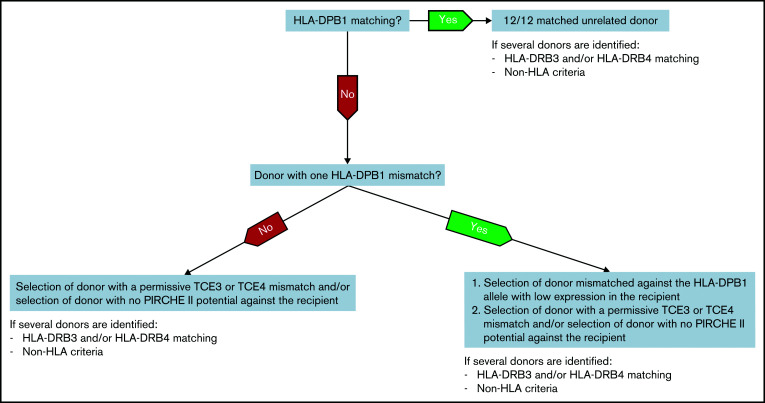Figure 2.
Decision tree for optimizing donor selection for HSCT candidates based on the results of this study and developed to reduce aGVHD risks in patients with a low risk of relapse. Classical HLA-DPB1 matching is the first parameter considered if a 10/10 donor can be identified. In case a 12/12 matched donor is not identified, the feasibility of selecting a donor with one or two biological permissive mismatches is explored. In cases when one or several donors carrying only one HLA-DPB1 allele mismatch are available, a low expression mismatched allele should be preferred in the recipient, followed by the feasibility to select a permissive TCE3 or TCE4 mismatch and/or to avoid PIRCHE II. The prioritization of expression over the 2 other biological models is based on the combined analyses in Table 3 showing that expression adds new information beyond TCEs and PIRCHE II. Of course, TCEs and PIRCHE II in addition to expression or as an alternative strategy are also informative. When allele matching cannot be achieved (ie, for selecting among unrelated donors with two HLA-DPB1 mismatches), the feasibility to select a permissive TCE3 or TCE4 mismatch and/or to avoid PIRCHE II applies. According to our data, TCEs and PIRCHE II should be considered equally during donor selection. The role of HLA-DRB3/4 matching and additional non-HLA factors should also be considered.

